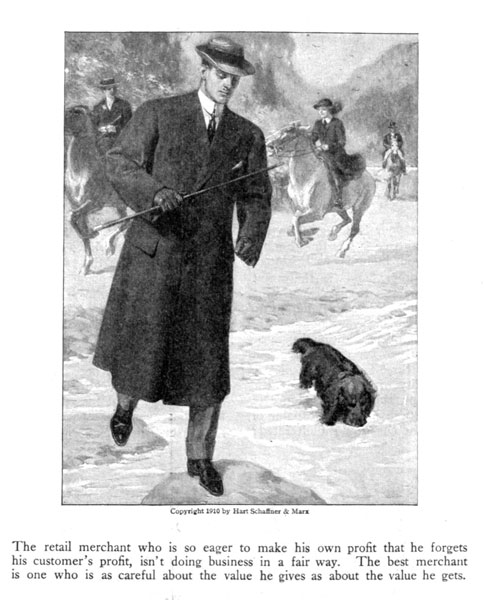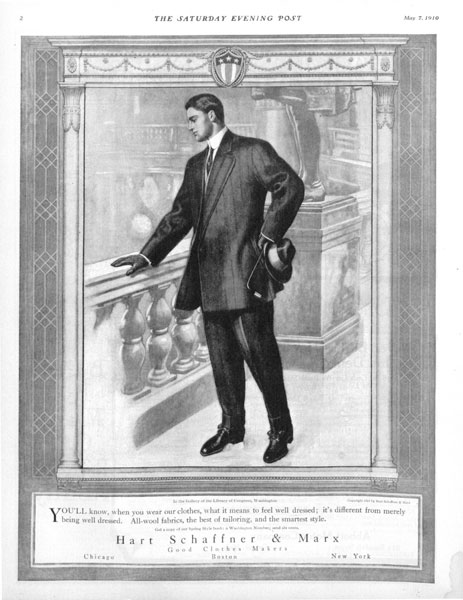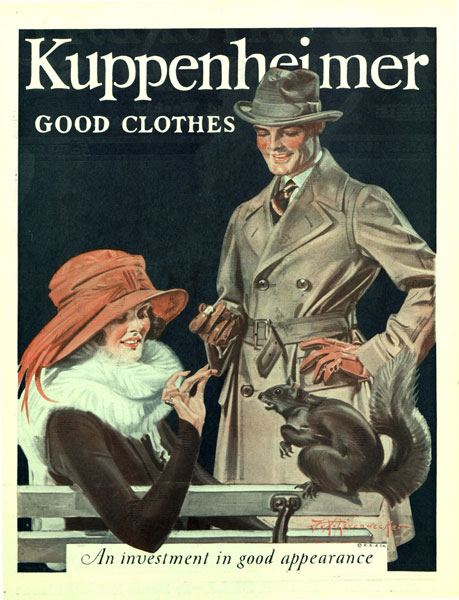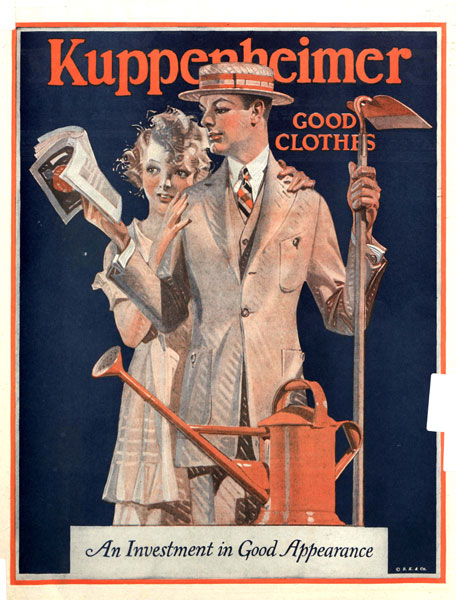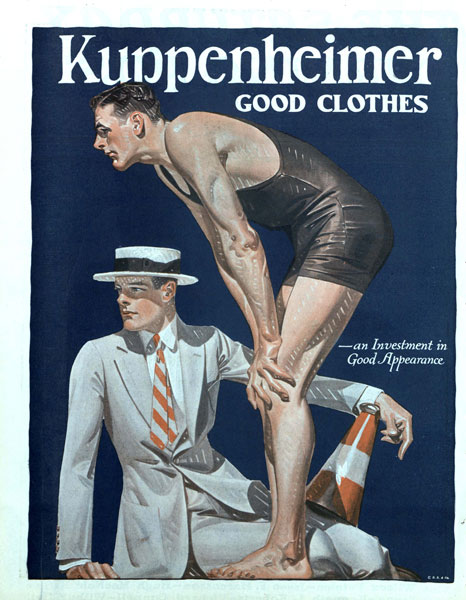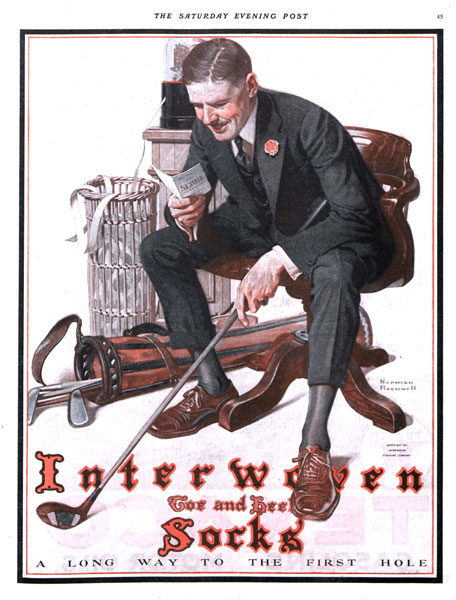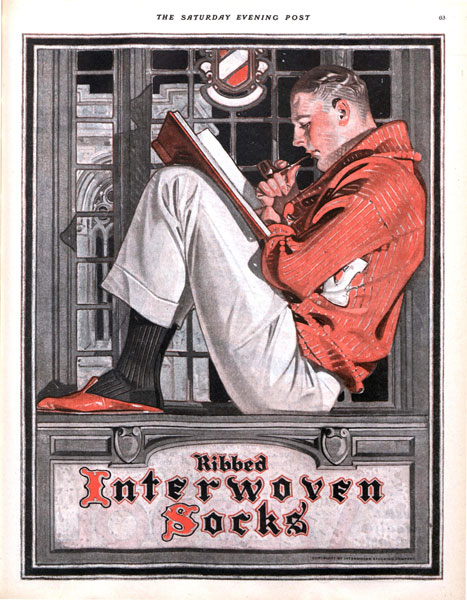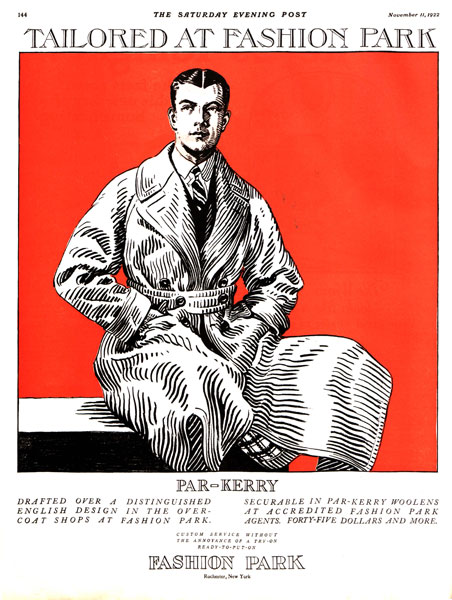Vintage Ads: Dressing Like Heroes in 1922
The country was in the market for heroes in the 1920s. The sturdy, young veterans who’d recently fought, and won, the World War, fit the bill perfectly. The media presented the young heroes, the pride of their country, as victorious but modest. They were already becoming what heroes often become unintentionally: fashion trendsetters. America’s clothing manufacturers were now designing suits that, they believed, reflected this vibrant young American male.
The new look came at a time when America was hungry for fresh starts and new ideas. Unfortunately, the 1920s had a bad start. A sharp, post-war recession slowed business growth and consumer spending. But by 1922, the market had revived and the U.S. economy took off.
With the return of optimism and the promise of prosperous times, men grew tired of the heavy, bulky suits that filled their wardrobes as shown in these ads below.
Vintage men’s fashion ads from the pages of The Saturday Evening Post of 1910:
April 2, 1910
April 16, 1910
May 7, 1910
“Men’s dress and masculine identity reflected a national obsession with the youthful warrior,” writes Daniel Delis Hill, in his book American Menswear (Texas Tech University Press, 2011. “The power look of the bulky, over-padded clothing of the Edwardian era was abandoned in favor of the slim silhouette of the lithe young man. Jackets and trousers narrowed significantly for a tight, contouring fit. Natural shoulder lines emphasized a feline agility rather than brawn, and shorter jackets made legs look longer and slimmer.”
They were ready for the trim, new look of America’s youth, which was advertized in the pages of the Post.
For years, American tailors had been copying the traditional styles of the French and British. But in 1922 they began reworking their suits to reflect this young image, making them less formal and more comfortable. The new styles proved so popular, they began influencing styles in Europe. Men in France and Britain began wearing the soft-collared American shirts instead of the hard-as-cardboard versions they had been sporting. And, like their American visitors, they began wearing tuxedos without vests, and ordering suits in lighter, more comfortable materials.
Before the 1920s, clothing advertisements tended to show men at work or in formal settings. Illustrators drew the models as earnest, determined-looking businessmen. Now the men in the ads looked young, relaxed, and rarely at the office or the opera. Instead they were shown lounging with friends, idling, or relaxing at a sporting event.
Sports became an important element of life in the 1920s. Baseball, golf, and boxing gained a new popularity. Men were discovering a new enjoyment of exercise and were willing to take time away from work for athletics. The Interwoven Socks advertisement below, by Normal Rockwell, is a good symbol of the times: a golfer ignores the figures from the stock ticker as he studies his numbers scorecard.
Vintage men’s fashion ads from the pages of The Saturday Evening Post of 1922:
January 28, 1922
February 25, 1922
April 22, 1922
April 29, 1922
May 20, 1922
July 15, 1922
August 12, 1922
August 19, 1922
August 26, 1922
October 21, 1922
November 11, 1922
December 30, 1922
You might recognize the work of J.C. Leyendecker in several of the ads above. He was highly regarded by clothing manufacturers in the 1920s because he seemed captured the spirit of vigorous, modern youth like no other illustrator.
The men he drew for Cluett Peabody & Company’s Arrow collars campaign became a symbol of the 1920s. They all looked strong, self-confident, determined, and somewhat heroic. And young.
